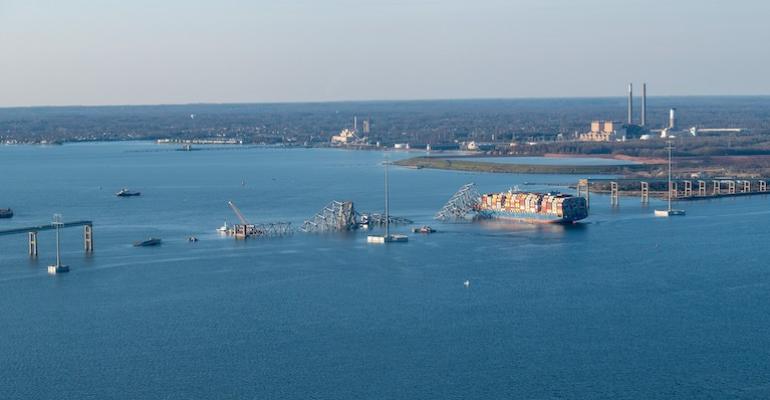The six-year contract between the International Longshoremen’s Association and the United States Maritime Alliance, which represents terminal operators and ocean carriers on the East Coast, runs out at the end of September and no new agreement has been reached so far.
According to Peter Sand, Chief Analyst at Oslo-based Xeneta, a freight rate benchmarking platform, the threat of labour strikes on the East Coast has the potential to cause far more disruption to ocean freight shipping than the collapse of the bridge in Baltimore and the subsequent blocking of the main channel.
“The clock is ticking and if no agreement is reached, then the implications will be significant and widespread disruption at US East Coast ports,” Sand declared. “This would almost certainly see rates increase for ocean freight container services and could see some shippers choosing to head back to the US West Coast or Mexico for imports.”
Data released yesterday, however, indicates that average spot rates from the Far East into US North East ports, including Baltimore, have fallen only slightly since the March 26 allision in which the 9,972 teu container ship, Dali, struck the bridge, causing its collapse and the deaths of six bridge maintenance workers. Rates have fallen only by about 1%, to $5,421 per feu since then. If other US East Coast ports such as New York / New Jersey are included, rates from the Far East have reduced by about 3% over the same period.
Rates from Europe to North East Coast ports, however, have fallen by a larger margin of 8% since the accident, down to $2,357 per feu. If other East Coast ports are included, rates are down by 4%.
Sand predicted that the majority of containers will now be handled at New York / New Jersey because many of the ships originally bound for Baltimore would have been stopping there anyway. That could be why there has been no upward impact on rates, he said.
“Ocean freight container shipping rates may not have increased following the bridge collapse, but this incident in yet another problem for shippers to handle on top of all the other disruptions impacting supply chains at the moment, including the ongoing diversions in the Red Sea region and drought in the Panama Canal,” Sand added.
Lars Jensen, CEO at Vespucci Maritime, saw the impact from the Baltimore bridge collapse being limited to inland logistics in the US.
“From a US perspective this only has impact in the northeast as cargo flows is mainly redirected through Norfolk and New York/New Jersey. This leads to a 10% increase in port handling in these two ports, which is within their capacity. As a result, some delays and cost increases might be expected, but nothing disruptive on the ocean side,” he said in a report for the Baltic Exchange.
Last Friday, the Port of Baltimore issued a statement saying that it expects to open a 280-foot-wide and 35-foot-deep channel by the end of April. It also expects to reopen the main channel, 700-feet wide and 50-feet deep, by the end of May.
Copyright © 2024. All rights reserved. Seatrade, a trading name of Informa Markets (UK) Limited.
Add Seatrade Maritime News to your Google News feed.  |

